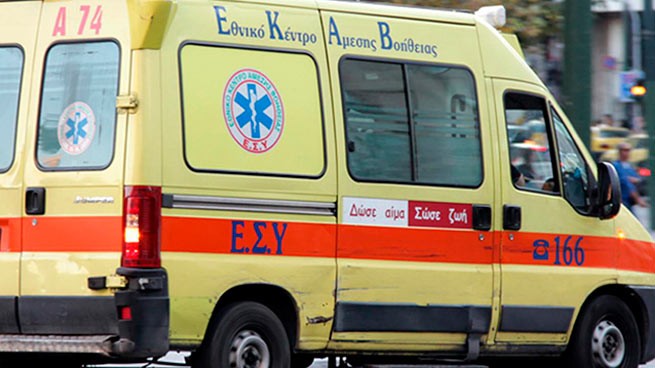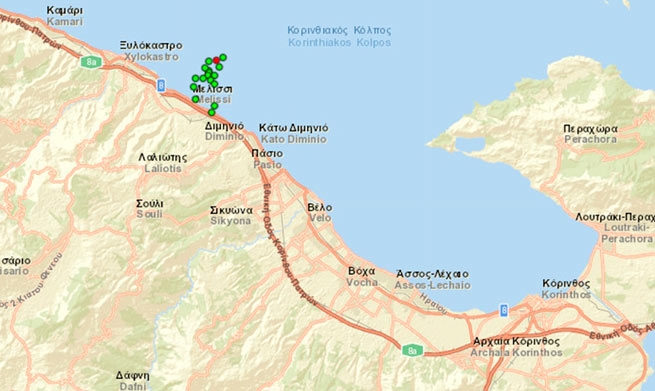Seismologists are concerned about the southern part of Central Greece, the northern Peloponnese, Athens, and Crete after continuous seismic shocks recorded in all these areas.
In particular, the inhabitants of Heraklion on Crete did not sleep a wink last night because of the aftershocks that began … to shake the southern part of the prefecture, culminating in a strong earthquake measuring 5.1 on the Richter scale and the 25 aftershocks that followed. The depth of the focus was 8.9 km, tremors were also felt in Rethymnon and in eastern Crete.
A similar situation occurred in the triangle of Loutraki, Alcyonides, Xylokastro, which has been shaking for the last 24 hours, and the records of the Institute of Geodynamics show another earthquake almost every hour.
The quakes were of minor magnitude, peaking at 3.8 on the Richter scale this morning at 08:42, in the area of the sea, 6 kilometers east of Xylokastro, but that’s not the problem: the problem is whether they are pre-earthquakes the upcoming big one.
Earthquakes were felt in many places in Greece. Exactly one minute before the 3.8 quake, it was preceded by a 2.3 quake and immediately followed by two smaller quakes, 1.8 and 2.1. Naturally, this caused particular concern, since Corinthia is a special place that evokes tragic memories.
OASP President Eftimi Lekka says the phenomenon is “under observation” and everyone is hoping that faults in the area will not herald a much larger quake.
- The Alcyonides earthquake with 20 deaths in 1981, with a magnitude of 6.7 and 6.4 after it, destroyed Loutraki, shook Attica and destroyed many areas in between.
- The June 1995 Aigio earthquake of magnitude 6.1 caused 26 deaths.
This is the “death zone” that produced the most deaths overall, with the exception of the 1999 Attica earthquake and its 143 deaths. Most of the casualties were due to roof collapse. factories in Menidi.
Seismologist Gerasimos Papadopoulos believes that Corinthia is prone to cluster earthquakes, that is, series of earthquakes, usually small ones, that do not end with a large earthquake.
“It is still not clear in Xylokastro: aftershocks or cluster earthquakes?”, – Akis Tselentis, director of the Geodynamic Institute, said on this occasion. The seismologist refers to the cause of earthquakes – a small fault: “Seismic activity in it has been going on for the last 24 hours and may continue for several more days. It is not related to the large fault structures in the Corinthian Sea, nor to the Xylokastro Fault as such. The area of East Corinthia, which we know has been “recharging” with energy for several years, and which we are mainly interested in, is not showing signs of a major earthquake at this time.
The company “Geodynamics” has installed additional devices, and we conduct round-the-clock monitoring. The people of Xylokastro and Kiathos, who have rightly been worried in recent days, should simply observe the usual seismic precautions. The phenomenon of serpentine seismic actions, as you remember, we observed several times in the past. Since we have repeatedly reported that the region of East Corinthia has significant seismic potential, the seismic precautions I mentioned in my previous message should be observed. At the moment we do NOT see anything, but in seismology there is no 100% forecast.”







More Stories
Crete "shaking" – two earthquakes this morning
Ecological… tombstones
Landslide on Santorini